Digital camera equipment is constantly evolving and improving.
If you are looking to make the most of your aviation photography, here are our recommendations of the best camera equipment to use.
Camera Bodies
The best cameras for aviation photography needs to have all of the modes needed for different situations, such as Aperture Priority and Shutter Priority. You should also look for a camera with spot metering mode and manual exposure correction. Compact cameras with long zooms don’t tend to have these options, but the following DSLRS do:
Canon EOS 80D
A camera that will yield great pictures without the huge prices of pro bodies like the 5D. The 80D offers the latest technology, such as Wi-Fi, intelligent viewfinder, and the ability to shoot video. It also packs a punch with 24.2 Megapixel pictures and continuous shooting mode. [More Information]
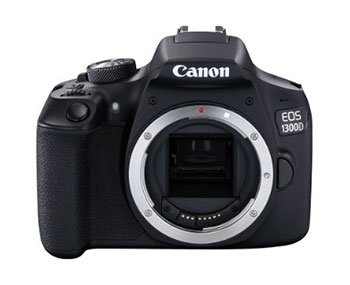 Canon EOS 1300D
Canon EOS 1300D
Recommended as a mid-range Canon DSLR. The 1300D is lightweight at only 690g and supports Wi-Fi. [More Information]
Nikon D750
A high end Nikon camera that offers the goods. With 24.3 Megapixels and the ability to shoot 1080p video, it is a good all-round professional camera. [More Information]
Nikon D3200
A good Nikon mid-range SLR capable of good results at an affordable price. The D3200 offers 24.2 Megapixels and a decent 3 inch LCD screen. [More Information]
Camera Lenses
Picking the right lens for your aviation photography needs to reflect the kind of shots you’ll most likely be taking, and there are many great lenses at affordable prices. For good all-round results in any spotting location, you’ll need a lens that goes up to 400mm. A longer focal length will give you more options, but will add to the price, so think carefully. Here are our recommendations:
Canon EF 100-400 mm f/4.5-5.6L IS II USM
This is the updated version of a highly respected lens for Canon cameras. It is compact and easy to carry around, but perfect for telephoto lengths, with image stabilisation built in and a coating that reduces glare. [More Information]
Canon EF-S 55-250 mm f/4-5.6 IS STM Lens
A more affordable option for Canon cameras which still includes image stabilisation and a 250mm focal length and good f-stop range. A lower range of 55mm makes it useful for closer shots, too. [More Information]
Nikon AF-S NIKKOR 80-400mm f/4.5-5.6G ED VR
One of the best telephoto zoom lenses for Nikon cameras, this Nikkor 80-400mm produces great results on moving and distant subjects. [More Information]
Nikon AF-S VR 70-300 f/4.5-5.6G IF-ED
Finally, at the mid price range this lens with vibration reduction still reaches 300mm making it perfect for most aviation photography tasks when viewing from a distance. [More Information]
Whatever camera and lens you choose needs to make sense to your budget and the type of pictures you like to take. There are many compact and lower price SLRs and lenses out there which still do a great job and let you take perfectly acceptable pictures. The options listed above are for those serious about the hobby and in the right hands will produce good results.

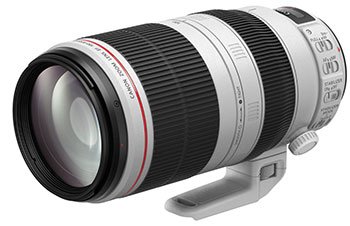
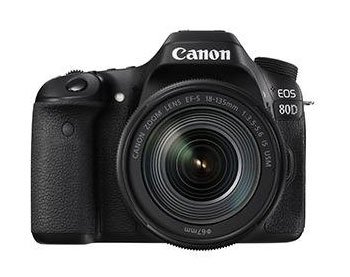
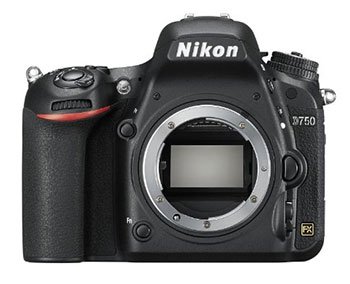
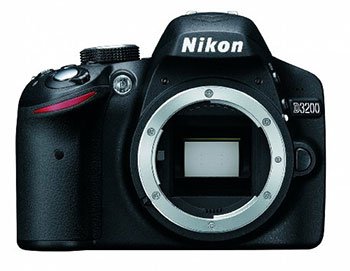

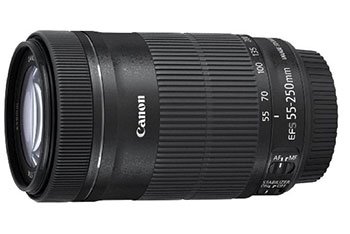
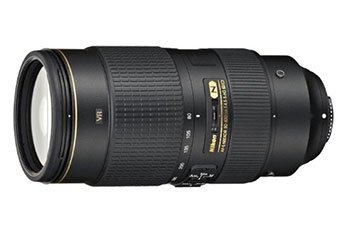
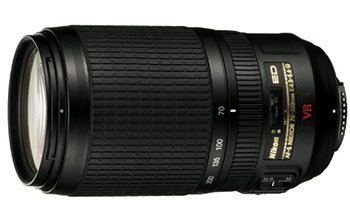



23 comments
Hi Matt
I use two Canon bodies, a 60D and a 700D which I use with a Canon EFS 18-200mm IS zoom and a Sigma DG 150-500mm 1:5-6.3 APO HSM Optical Stabilizer zoom. These two lenses cover all requirements for me, whether walking around a static park or taking shots of OTTs at heights of anything up to 40,000ft. The Sigma performs best at 450mm F9 and I have taken some superb high shots with an absolute minimum of shake due to the Optical Stabilizer. Yes, it’s heavy if you want to lug it around all day but it’s a fraction of any comparable Canon lens and certainly gives me the results I want.
Great tips Graham, thanks for commenting. I haven’t tried a lens that strong yet, but sounds great for OTT pics!
As far as camera bodies go the feel of the camera should be a priority. After all you will be carry it and the lens all day. Try renting it prior to your purchase. There is off course a debate as the whether Canon or Nikon are the best. They are the two top manufacturers. Many years ago I was a Nikon guy. Today I prefer Canon. As far as lenses go from a distance the 100 or 80-400s are ideal. If you have the resources the 600 and 800 mm fixed are even better. If you go to an air show and you are hands on a 24 or 28-70 or 105 would be ideal too. In the end it’s what you prefer.
Thanks for the tips. Great idea to rent and get a feel for different cameras and lenses.
Quality bodies and lenses are a great aid in our hobby but it is as important to have a good eye for a shot and the technique to match. Practice makes perfect.
Definitely agree with that. It’s best to try and get good at taking photographs before spending lots of money on expensive equipment.
I’ve used a number of cameras over the years , now using Canon 5D mk 3 and 7D mk 2
the best lenses have to be the L series, preferably with widest apertures you can get.
ie 400mm Prime f2.8 (about £7600) and as already noted the 100-400 mk 2 is brilliant.
On a par would be the 70-200mm f 2.8 mk 2 L series being a bit lighter in weight but fast! Add a converter mk 3 be it a 1.4x or a 2x and the is little degradation at an A4 print level. IMHO your lenses are the prime investment because camera bodies are fashionable and sadly are beginning to have so many whistles and bells that its easy to get swallowed up in all the hype.
If your storage cards are interchangeable be it Compact flash or SD, then always aim for Sandisk Extreme or Lexar UDMA with the highest speed available (600x) usually labelled photo or professional.
Why use these?
the same storage media is used in medicine and highly sensitive areas because they need stability, reliability and retreivability.
I recommend nothing larger than 64Gb (unless its for extended video) as that way the camera batteries are not being used as much in handling buffer issues.
Better to have 2x 64GB than 1x 128GB also reduces risk of any corruption on entire trip. at least 50% of images may be saved if spread over 2 disks!
Mega Pixels are vital to image production but not absolute!
Often the lighting, setting and other factors make the subject sing!
So by having as higher quality lens as you can afford (or Canon offer a daily hire service on the more exclusive lenses, which is a good way to try before you buy) that is the better setup
Ive used a 400mm f 2.8L on entry level DSLR and had fine results equally ive used a “plastic” lens on a high end camera and its been abysmal.
As our collegue has noted 3rd party lenses are pretty good these days as they have upped their game in order to get a piece of the market, Sigma, and Tamron are 2 examples of robust, acceptable quality glass. But like many spotters I talk to,
get the best your budget allows, and the nature of our interest – the faster lens the better.BTW always put a skylight filter on lens to protect it (personal experience of failure to do so and and a damaged lens put that right) and if theres a specific image you want that must be “pure”, unscrew filter, shoot image, screw filter again.
Most Photographers dont bother removing the filter simply shoot in RAW then post process images, unless they introduce a polarizer!
Thanks for the tips Julian!
I have a Canon eos 50d, which I find great, but that is a aging body now, I have a canon 75-300m IS ,a great lenses and also a canon 100- 400m IS, which is also a good lense( the mk1 is only available 2nd hand now, the mk2 version is £1600-00 +), only draw back is that they do get heavy carrying it around all day.
research has shown that to buy a X1.4 or a X2 converter can be a waste of money
Thanks Dean!
Hello,
I’ve got to shoot super Lens: Nikon 70-200 mm f / 4G ED VR (Cf 1.5 = 105-300 mm), which I use on Nikon D7100.Objektiv has excellent resolution and the main thing is that it weighs about 800gr
I started spotting with a Canon 70D and have only recently replaced it with a new 5D Mark IV. The 70D is a great intermediate camera, but its weaknesses do start to show when you strap on an EF 100-400 or bump the ISO to anything above 1600.
I use a Nikon D5300, 24MP camera body
Along with a Nikon 55-300mm VR lens and the Sigma 150-600 mm for aircraft photography. I have found these are both great lenses, though I am looking for 18-150 lens in recent weeks.
[…] The Best Camera Equipment for Aviation Photography […]
Personally I use the Sony a77ii I have this paired with a sigma 120-400mm lens and find this a good combination for most aircraft shots. Personally I find the a77ii a fantastic camera body and wouldn’t change it for anything, I have used canon in the past and can’t fault them but I think alot of people overlook Sony, Pentax and Fuji etc and become blinkered into what most see as the big 2
Just a note for those starting out. There is no “preferred” camera model or type. You will hear all the fanboys on threads like this saying the camera they use is the best. Nikon, Sony, Pentax, Olympus, Canon (et al) are all good. Don’t get suckered into mirror less as opposed to those who use a mirror. They all still take great shots. Secondly, you will be tempted to get the biggest and best system but that is not priority. At the end of the day you can still get a great entry level camera on a budget and enjoy the pastime. A good multi purpose lens 18-105 range and a zoom to about 300mm are pretty cheap and provide great shooting.
Great tips Gary, thanks for commenting!
Hey,
Im starting photography with plane spotting, I find it really fun and use a canon 400d might be a bit outdated but works fine. I still need to find a good lens any tips for beginner plane spotting lenses? I dont really want a telescopic lens yet.
Hi! I’ve decided to upgrade my equipment from a superzoom to a DSLR (canon 60D). i will need to invest in a zoom lens (currently i only have the 10-18 and the 50mm 1.8) I have two questions therefore: 1): Is image stabilization a neccesity? I could save a lot of money by choosing a non IS lens, and i do have a good video tripod(manfrotto befree). 2): What focal lenght do i need? I can buy a 18-135mm from a family member for cheap, but is the focal range big enough?
Hi Kristoffer! IS is not required, but will give you better pictures if you’re not using a tripod. If you’re taking pictures of aircraft from around airports, you should have a lens that goes up to 200 or 300mm ideally. 18-135 will be fine if you take pictures close up, or at museums etc.
Hey everyone!
To get those shots where the cockpit is the focus during midflight, what lenses would you recommend? Something wide angle I would assume?
I use an 8 year old Canon 5D mk2 with a new 70-300 L lens.
If you strap a great quality lens onto most SLR bodies you will get good results.
I’ve always bought Canon and I’ve found it hard to beat a 5DIII with an EF 100 – 400mm L IS USM. I will admit I’m a sucker for the latest model and have upgraded to each new 5D. I’ve also ventured into mirrorless with the R but found images a bit flat so went back to a 5DIV. You can pick up a good used 5D and lens from people like Wex Photograpy or BPM for significantly less money but I believe the lens is the priority with any camera. In keeping with my fetish for the latest technology I’ve just traded the 5D in for a Canon R6, their latest mirrorless and am impressed, but I like the tech that comes with it!